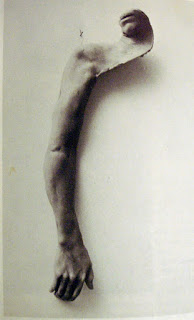Since 1990, The Legible City made my Jeffery Shaw, allows an individual to explore a virtual world by simply riding a mounted bicycle. The viewer is expected to encounter buildings, signs, roadways, and more along the expedition. The work was said to predict what the future may hold for this line technology as progressing forward. People are said to become more familiar with the concepts of virtual reality, as much as they are now with modern television, telephones, computers, tablets, and other means of modern technology. We are already seeing this now with the introduction of virtual reality games that have recently been provided to the common public.
The Cave in 1992 was a virtual environment of stenographic computer graphics which interacts with the movements of the user equipped with stereo glasses, this allows for users to spot other users present in the same area. For every second, images are played out through the projection.
So.So.So. Somebody, Somewhere, Sometime by Maurice Benayoun enables users with VR binoculars to enter an environment of panoramic spheres that display images of people engaging in various activities at different times. Users create a new reality based on the pre-existing one when focusing on elements from different scenarios.
Artist Micah Ganske made his attempt at AVR with his project; Ocular EVA Pod - Augmented VR Project. In addition to the virtual reality provided through the Ocelus Rift, the created a six-foot tall sculptural cockpit which was 3D printed. The user is meant to feel as if he/she was piloting through a virtual environment created by Ganske. The user finds that the cockpit is replaced virtually in an enclosed glass EVA vehicle. The airlock doors open as the pod enters space and finds one of Ganske's alternate projects, an assemblage of spacecraft sculptures combined in the form of a humanoid figure. His work revolves around what he refers to as "Asperational Technology" which details what our future could have been and what he believes could still be.














































